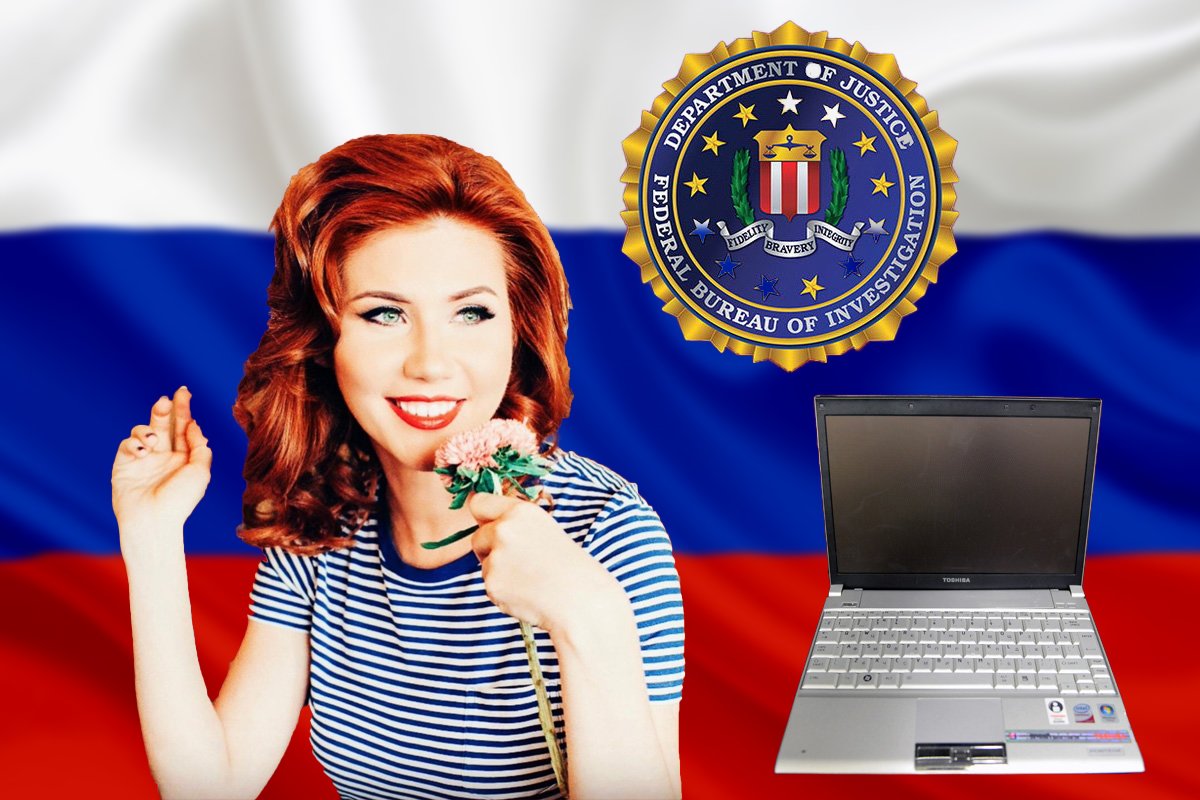Operation Ghost Stories: How Anna Chapman and the Russian Illegals Almost Stole State Secrets

Anna Chapman was one of 10 Russian spies or “illegals” arrested by the FBI in in 2010 for attempting to steal US government secrets. Composite by Coffee or Die Magazine.
Anna Chapman arrived in Manhattan in 2009 and nestled into the city that never sleeps as a thriving up-and-comer in real estate. In her mid-20s, the petite, red-haired realtor made fast friends in politically connected circles, using her flirtatious charm and wit to gain trust.
But Chapman’s intentions were far more sinister than just rubbing elbows with the political elite. The FBI soon discovered Chapman was a Russian spy, or “illegal” — a title associated with intelligence officers without diplomatic immunity — sent to New York City for a deep-cover assignment to penetrate cliques that influenced foreign policy decisions.
And the FBI had the evidence to prove it.
For about a year, the FBI had monitored Chapman’s activities as a part of a decadelong investigation called Operation Ghost Stories, a code name selected after the FBI realized six of the 10 suspected spies had assumed the identities of dead Americans. The members of this spy ring lived normal, middle-class lives. They got married, had children, attended college and graduate programs, and obtained jobs while working covert missions to collect government secrets for Russian foreign intelligence.
These deep-cover assignments, which later inspired the TV series The Americans, weren’t just some offshoot experiment but a daring, committed effort that had seen success across Europe once before. The so-called Cambridge Five had successfully infiltrated British MI6 and MI5, the equivalent to the CIA and FBI, between World War II and at least the 1950s. The most notorious of the Cambridge Five, Kim Philby, was even appointed the head of MI6’s anti-Soviet section while working as a double agent for the KGB.

While Soviet intelligence circles celebrated their “Great Illegals” program from years past, the FBI was able to link Chapman to the modern illegals operation in New York City to crack the case.
Undercover FBI agents followed Chapman to in-person meetings in bustling cafes and coffee shops. A surveillance tape captured Chapman transmitting messages from a department store to her contact outside, while surveillance teams even intercepted encrypted messages from her specially-adapted laptop.
“We were able to capture wirelessly the communications between her and her handler,” then-FBI Counter Intelligence Assistant Director Frank Figliuzzi told ABC News in 2011, adding that Chapman transmitted from at least six locations. “She transmits and receives messages from the official who is in close proximity but not anywhere near visibly close to her … she is transmitting encrypted code that the FBI was able to break.”
After the FBI broke the code, it successfully planted an informant in the spy ring. The FBI hacked Chapman’s computer to cause technical problems, then had the informant meet Chapman to offer to fix the “problem.” The FBI discovered Chapman used the laptop to create a private wireless network to communicate with a Russian government official.

“We were dealing with the most sophisticated cadre the Russians could put here,” Figliuzzi said. “What we have learned here is the absolute resolve of a foreign intelligence service to penetrate U.S. foreign policy circles.”
Figliuzzi added that Chapman and those within the spy ring were the “cream of the crop” selected from Russia’s SVR intelligence academy. Although the FBI claims the spies never got their hands on any classified documents, an unnamed FBI agent assigned to the case said, “without us there to stop them, given enough time, they would have eventually become successful.”
The FBI arrested the illegals on June 27, 2010, after years of gathering intelligence and identifying all players involved. The spies pleaded guilty to conspiring to serve as unlawful agents of the Russian Federation within the US only 11 days later. But they were never convicted of espionage.
On July 8, 2010, the US transferred the 10 spies into Russian custody in exchange for four prisoners allegedly connected to Western intelligence agencies.
“The Russian government spent significant funds and many years training and deploying these operatives,” said one of the FBI’s counterintelligence agents who worked on the case, according to the FBI’s website. “No government does that without expecting a return on its investment.”
Chapman, now 40 years old, has remained in the public spotlight ever since as a high-profile social media influencer, fashion designer, model, and political operative.
Read Next: An FBI Special Agent’s Unforgettable Journey to the Pentagon on 9/11

Matt Fratus is a history staff writer for Coffee or Die. He prides himself on uncovering the most fascinating tales of history by sharing them through any means of engaging storytelling. He writes for his micro-blog @LateNightHistory on Instagram, where he shares the story behind the image. He is also the host of the Late Night History podcast. When not writing about history, Matt enjoys volunteering for One More Wave and rooting for Boston sports teams.
BRCC and Bad Moon Print Press team up for an exclusive, limited-edition T-shirt design!
BRCC partners with Team Room Design for an exclusive T-shirt release!
Thirty Seconds Out has partnered with BRCC for an exclusive shirt design invoking the God of Winter.
Lucas O'Hara of Grizzly Forge has teamed up with BRCC for a badass, exclusive Shirt Club T-shirt design featuring his most popular knife and tiomahawk.
Coffee or Die sits down with one of the graphic designers behind Black Rifle Coffee's signature look and vibe.
Biden will award the Medal of Honor to a Vietnam War Army helicopter pilot who risked his life to save a reconnaissance team from almost certain death.
Ever wonder how much Jack Mandaville would f*ck sh*t up if he went back in time? The American Revolution didn't even see him coming.
A nearly 200-year-old West Point time capsule that at first appeared to yield little more than dust contains hidden treasure, the US Military Academy said.












